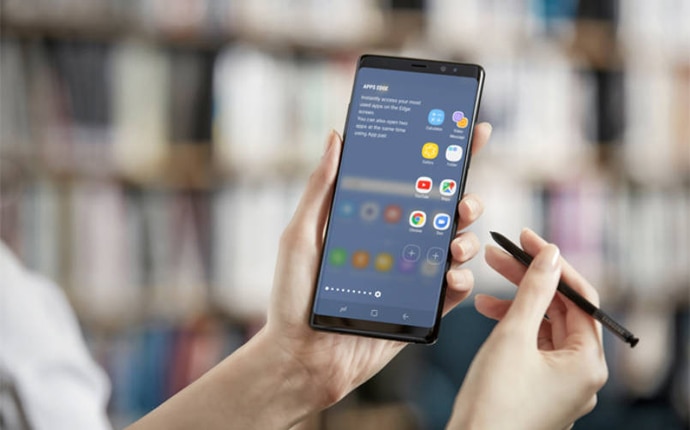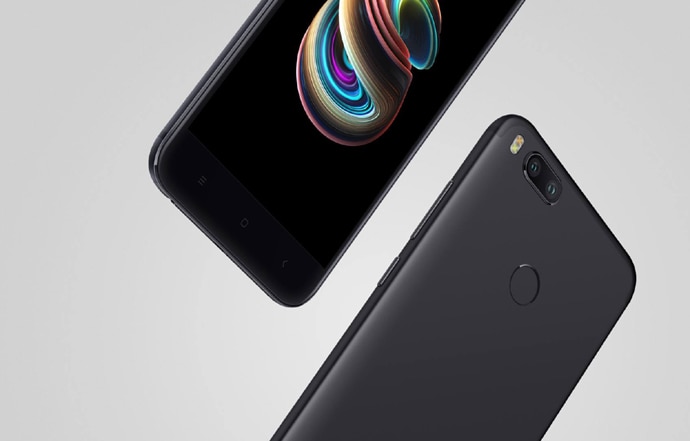Year in review: Best smartphones launched for every budget in 2017

2017 has been a great year for smartphone manufacturers. The industry has seen sales – and profits – soar to new highs. The growth in the market has been majorly because of a number of interesting phones being launched this year.
With the bezel-less trend catching, phones this year have not only grown more powerful, but also become sleeker and better to look at. There have also been some marked improvements in camera technology, with even budget phones bringing with them above average dual lens setups.
Another interesting trend seen this year was how manufacturers treated different segments of the market when it came to pricing their phones. While at the upper end, smartphones became more expensive and for the first time crossed the 1 lakh threshold, at the lower end, we saw the entry of ultra-affordable devices that promised not only 4G connectivity, but also all the other wonders that smartphones bring with them, including voice assistants.
So as the year comes to an end, let's take a look at the best that we saw across all segments of the smartphone market in 2017.
Premium flagship winner(s)
The premium flagship segment of the market in 2017 went through an interesting churn. With bezel-less displays becoming the norm, the manufacturers moved on from adorning their phones with beautiful designs or raw processing power and worked towards crafting devices that were more than just a sum of their looks and spec sheets.
Two phones that led the way in this regard, were the iPhone X and the Galaxy Note 8. Let's start with latter first.
Galaxy Note 8
The Galaxy Note 8 comes with a massive 6.3 inch 1,440x2,960 QHD+ display that merges seamlessly into the phone's intimidating metallic frame and an Exynos' 8895 SoC paired with 6GB of RAM and up to 64GB of built-in storage that can be expanded using a MicroSD card.
The device comes with a number of nifty tricks up its sleeve - Bixby Voice Assistant, S Pen and the company's very own docking solution, the DeX Station. However, what makes it an absolute winner is its price. The Galaxy Note 8 at a price of Rs 67,900 as opposed to its US pricing of the device $930, is an absolute steal, one that should not be missed if you're in the market for a premium Android flagship.

iPhone X
The other big winner of the year is Apple's iPhone X - a special device created to celebrate the 10th anniversary of the launch of the first iPhone.
The futuristic iPhone comes with a drastic redesign which sees it coming with a 5.8-inch edge-to-edge OLED curved display dominating the front that goes on to melt into the device's metal frame which then meets a reinforced sheet of glass at the back of the phone.
The phone runs the same SoC found on the iPhone 8 lineup - the A11 Bionic - paired with 3GB of RAM. The A11 Bionic module comes with a dual-core Neural engine which will be used exclusively by the phone's Face ID hardware. The iPhone X's main camera module at the back brings with it two 12-megapixel lenses - same as in the iPhone 8 Plus - with f/1.8 and f/2.4 apertures.
The hardware is impressive, it looks great, and brings with it some really cool features that are sure to turn your head. However, all this comes at a steep price. The phone is currently retailing at Rs 92,430 for the 64GB variant and Rs 1,05,720 for the 256GB one.
But, lest we forget, this is Apple after all, and if you're someone who is smitten by the charm of the new bezel-less iPhone X, then don't balk at the price, and buy away.

Best sub-Rs 40k flagship: Nokia 8
Although the sub-Rs 40,000 segment of the market has seen some really great phones being announced of late, and the competition becoming tighter than ever, the fight here is truly between the Nokia 8 and the OnePlus 5T. Both the phones, are brilliant in their own rights and represent great value, but the winner here is the Nokia 8 which just edges out because of its superior power management, better camera performance, and the crispness of its Quad-HD display.
The first truly high-end smartphone by HMD Global's reboot. The device is nothing like the flagships that have donned the Nokia logo before: for starters, it's an Android phone, running a close to stock skin with no bloatware - as seen with Google's Pixel and Pixel XL.
The phone comes with top-of-the-line, flagship-worthy display, and specs. There is a 5.3-inch Glance Screen Quad HD display with an impressive pixel density of 544ppi.
Powering the phone is Qualcomm's top-of-the-line 835 SoC paired with 4GB RAM and an impressive 3,090mAh battery with QuickCharge 3.0 support that it claims can fully charge the phone in just 30 minutes. It also brings with it 64GB of internal storage that can be expanded up to 256GB.
The Nokia 8 comes at a price of Rs 36,999 making it a very good buy.

Mid-range winner: Mi A1
The Mi A1 boasts of flagship worthy specs but fits nicely in the budget segment with a price tag of Rs 14,999. In terms of specs, the device comes sporting Xiaomi's trusted 5.5-inch 1080p display protected by a 2.5D Corning Gorilla Glass sheet that has previously been seen on phones like the Redmi Note 4.
At the bottom, there's a speaker grille, a USB-Type C port along with a 3.5 mm jack while the microphone and the infrared sensors have been placed at the top of the device.
Under the hood, the phone comes packing under the hood Xiaomi's trusted octa-core Qualcomm Snapdragon 625 SoC paired with 4GB of RAM. There is 64GB of storage provided onboard which can be expanded using a MicroSD card. The battery that's keeping the system running here is a 3080mAh non-removable pack.
Xiaomi's phone also brings with it a 12-Megapixel + 12-Megapixel dual camera setup at the back.

Under Rs 10k budget phone: Xiaomi Redmi 5A
There's only one winner here, the Redmi 5A. The device borrows heavily from the DNA of other popular Xiaomi phones and comes with a plastic unibody design and curves – unlike the 4A – affording it a familiar, yet premium feel.
Coming to the specs, Redmi 5A comes with a 5-inch HD IPS panel and the highly efficient 425 SoC paired with 2/3GB of RAM. The Redmi 5A also pack a 3,000mAh battery which is non-removable, but one that Xiaomi claims can provide 8-days of battery life on standby on a single charge.
In terms of optics, it comes sporting a 13-megapixel camera on the back with f/2.2 aperture, Phase Detection Autofocus and LED flash. The rear camera is capable of shooting 1080p videos at 30fps. On the front, the Redmi 5A comes with a 5-megapixel camera with f/2.0 aperture.
The phone has been announced in two variants – 2GB RAM paired with 16GB storage and 3GB of RAM mated to a 32GB ROM – with the entry model being announced with a price tag of 5,999 while the 3GB RAM variant will retail for 7,999. However, Xiaomi is also giving a Rs 1,000 discount on the first 50 lakh Redmi 5A phones it sells, bringing down the price to effectively Rs 4,999 and 5,999.

Ultra-affordable 4G smartphone - Airtel-Karbonn A40 Indian
So, this is a new segment that has opened up in the market after the entry of the JioPhone. However, because the Reliance-made phone runs Firefox's KaiOS, it loses out to Airtel-Karbonn's A40 Indian.
The A40 Indian comes with a 1.3 Ghz processor with 1GB RAM and 8GB of internal storage, which is expandable by up to 32GB via micro-SD card.
It runs on Android OS and comes with the promise of running games, movies and more on the go - just like any Android-based smartphone can.
At an effective price of Rs 1,399, A40 Indian is a great entry-level 4G smartphone.

